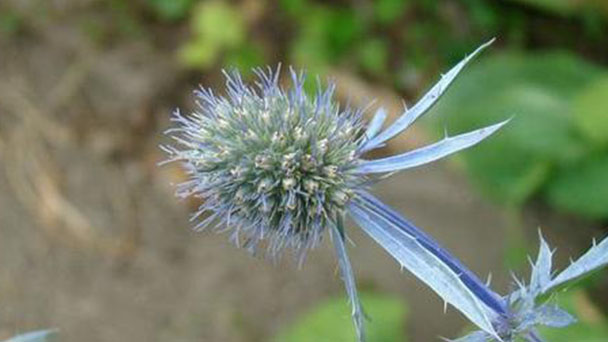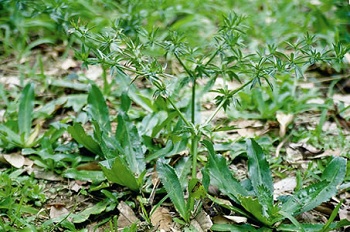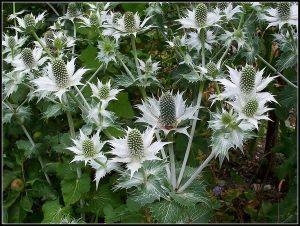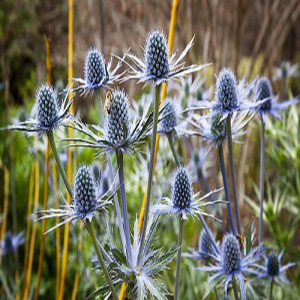Sea holly (Eryngium) profile
Written by Maggie
Apr 26 2021

Sea holly (Eryngium) is a member of the Umbelliferae genus.
Sea holly is an erect perennial herb, capitate, pale blue flowers. sea holly grows in weedy areas. Central and southern Europe and the Soviet Union of the Caucasus, western Siberia and Tianshan, Altai and other regions are also distributed.
Sea holly picture

Sea holly info
| Botanical Name | Eryngium |
| Common Names | Sea holly, blue aryngo |
| Plant Type | Herbaceous perennial |
| Sun | Full sun, partial shade |
| Hardiness Zones | 3 to 9 (USDA), varies by species |
| Flower color | Green, blue, blue-purple, silver, white |
| Native Area | Central and southeastern Europe |
| Mature size | 6 inches to 4 feet tall; 1- to 2-foot spread (varies by species) |
Sea holly morphological characteristics
Sea holly is a herb of acanthum vulgaris perennial. Stems are grayish white to lavender gray to dark purple hard smooth, distally branched. Basal leaves long elliptic ovate, margin coarsely serrate. Inflorescences capitate at the top of each branch, oblong-ovate, broadly ovate, or hemisphemisphically; Flowers of Sea holly are light blue, petals and sepals alternate, membranous transparent. The fruit is elliptic, ovate or nearly round, and the flowering period is in summer.
How to grow and care for sea holly
Light
A full day of solar will provide you the strongest sea holly flowers and the most blooms. Sea holly can take care of section shade, however weaker stems will result, making staking quintessential to hold the flowers standing upright.Soil
The satisfactory planting medium is dry, sandy soil that is nevertheless prosperous with natural material. Although these flora will develop in negative soil, it is high-quality to amend with a little compost or peat moss earlier than planting. Sea holly is now not specific about soil pH. Anything round the impartial vary is sufficient. However, the vegetation want exact drainage or they will die off.2Water
Thanks to its lengthy taproot, sea holly is very drought tolerant as soon as set up and won’t want extra water except subjected to a prolonged, hot, drought. But extra floor moisture will motive the crown to rot, so sea holly must be particularly segregated from different plant life requiring greater water.Temperature and humidity
Sea holly is reliably perennial in USDA Hardiness Zones four to 9. They can be extra challenging to develop in areas with cold, moist winters.Fertilizer
Sea holly is now not a heavy feeder, however you have to nevertheless make certain your soil has lots of natural be counted in it. If not, you will want to feed or side-dress with compost in mid-season.
Propagating sea holly
Because sea holly has a faucet root, it does no longer divide easily. You can, however, take root cuttings in the spring.In late summer, cautiously dig up the plants, taproot and all, and reduce away nice, fats sections of roots. Never reduce away greater than one-third of the plant's complete root mass. Replant the mother or father clump immediately.
Plant the man or woman root sections in a combination of compost and vermiculite in a small pot, making positive the reduce quit (crown side) of the root section is going through up. The root section must be absolutely buried, however the reduce tip have to be simply barely below the surface.
Overwinter the pots in a sheltered location. In spring, the root segments need to commence to generate new roots, which you will see poking out of the backside of the pot. When a community of roots is installed and inexperienced shoots are rising above the soil line, you can transplant your new sea holly into the garden.
Growing sea holly from seeds
Most sea holly types can be commenced from seed. They do high-quality if stratified first—chilled to stimulate the increase cycle.3 The best approach is to direct sow in the fall and then be affected person and wait to see what sprouts in the spring. But you ought to begin sea holly seeds indoors if you kick back them for about 4 weeks in the fridge and then plant them outdoors; they will germinate in two to three weeks. But as with many perennials, these seedlings can also take most of the first developing season to set up desirable root structures and flower. In subsequent years, you can assume them to flower at the predicted time.Sea holly uses
Landscape uses
This plant works properly for these areas of the backyard that get constant, direct sun. It does nicely either as a single specimen plant or grouped in masses. Sea holly additionally makes a suitable reduce flower for arrangements.This is a notable flower for all these spots in the backyard the place the hose doesn’t attain or for developing in that strip of grass between the sidewalk and the street. But don’t confine it there. The blues and silvers combo properly with simply about each and every color, particularly yellow and orange. Pair it with rudbeckia, coreopsis, zinnia, and cosmos. The tall sorts want some help and planting them at the back of sturdy plants, like coneflowers, will assist maintain them standing.
Sea holly is famous with bees and butterflies, however now not with deer and rabbits. The flora ultimate a number of days in a reduce flower arrangement.
Sea holly medicinal value
Sea holly whole grass can treat cough, expectorant, bronchitis.
Varieties of sea holly
New introductions come out each yr and declare the shelf house of older types. They’re all lovely, however some develop higher in one of a kind conditions, so test to see which are profitable in your area.'Jade Frost' has variegated foliage and purple margins and veins.
'Blue Glitter' has dozens of blooms on every plant, with gray-blue foliage.
'Sapphire Blue' is a frequent preferred with blue plants and leaves.
'Tiny Jackpot' grows to 14 inches tall and appears precise at the the front of a border.

Latest Updated
- Benefits of Bugleweed - 7 Science-backed Health Benefits
- Bugleweed Dangers & Side Effects - Is It Poisonous?
- How to Plant Evergreen Trees - What You Should Know
- When to Plant Evergreens - Grow Guide for Evergreen Trees
- 12 Wonderful Evergreen Shrubs for Your Garden
- 12 Popular Evergreen Plants with Pictures for Beginners
- When And How To Prune A Lilac Bush Like a Pro
- How to Grow & Care for Lilac Vine (Hardenbergia Violacea)
- Japanese Lilac Tree (Syringa Reticulata) Care & Propagation Guide
- Shumard Oak Pros and Cons - What to Know
Popular Articles
- Winter maintenance of Antirrhinum Majus
- How to Grow Terminalia Mantaly Tree
- How to Grow and Care for Crossostephium Chinense
- How to grow Antirrhinum Majus in spring
- Peristeria Elata (Dove Orchid) Profile: Info & Care Guide
- Underwatered Snake Plant (Sansevieria Trifasciata) - Signs And How To Fix
- How to Care for Brazilian Jasmine Plant (Mandevilla Sanderi)
- How to Grow & Care for Graptopetalum Purple Delight in Summer
- Rosa Chinensis (China Rose): Plant Growing & Care Tips
- How to Care for Baby Sun Rose (Aptenia Cordifolia)